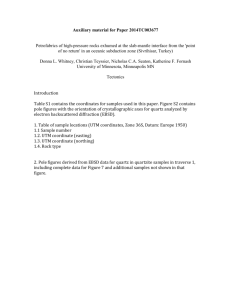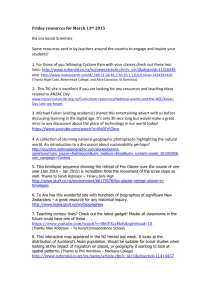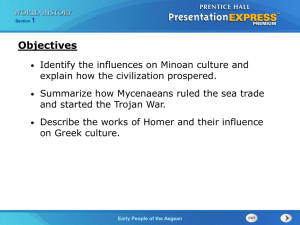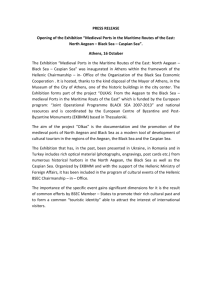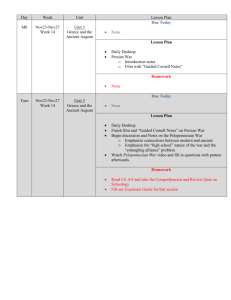1. introduction - International Cartographic Association
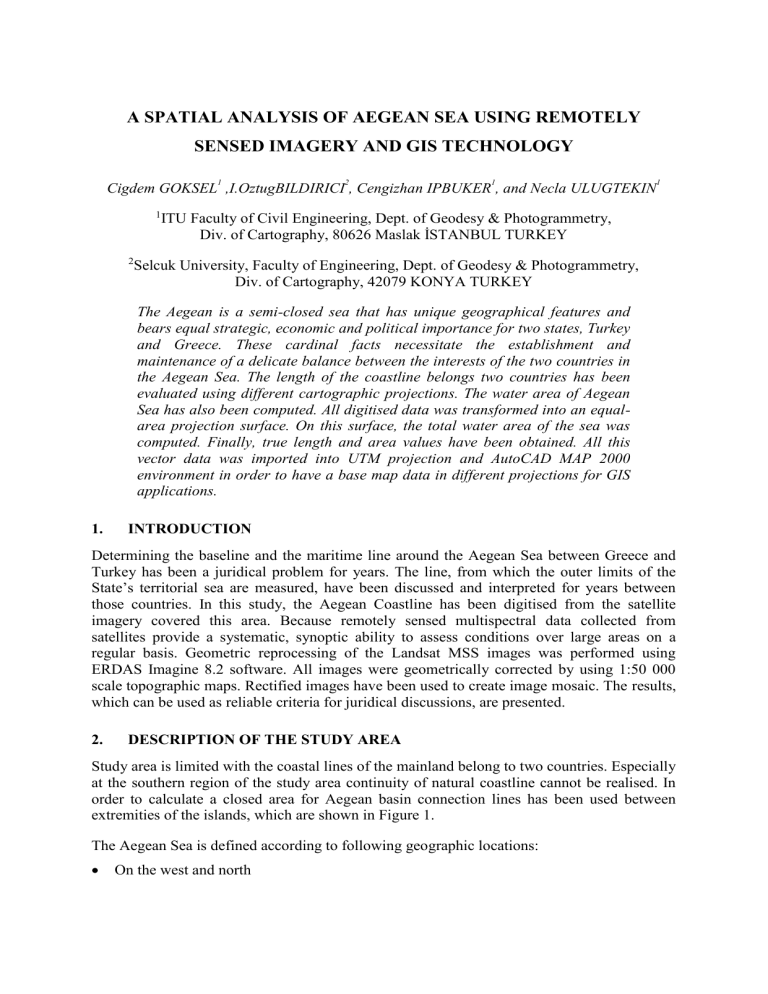
A SPATIAL ANALYSIS OF AEGEAN SEA USING REMOTELY
SENSED IMAGERY AND GIS TECHNOLOGY
Cigdem GOKSEL
1
,I.OztugBILDIRICI
2
, Cengizhan IPBUKER
1
, and Necla ULUGTEKIN
1
1
ITU Faculty of Civil Engineering, Dept. of Geodesy & Photogrammetry,
Div. of Cartography, 80626 Maslak İSTANBUL TURKEY
2
Selcuk University, Faculty of Engineering, Dept. of Geodesy & Photogrammetry,
Div. of Cartography, 42079 KONYA TURKEY
The Aegean is a semi-closed sea that has unique geographical features and bears equal strategic, economic and political importance for two states, Turkey and Greece. These cardinal facts necessitate the establishment and maintenance of a delicate balance between the interests of the two countries in the Aegean Sea. The length of the coastline belongs two countries has been evaluated using different cartographic projections. The water area of Aegean
Sea has also been computed. All digitised data was transformed into an equalarea projection surface. On this surface, the total water area of the sea was computed. Finally, true length and area values have been obtained. All this vector data was imported into UTM projection and AutoCAD MAP 2000 environment in order to have a base map data in different projections for GIS applications.
1.
INTRODUCTION
Determining the baseline and the maritime line around the Aegean Sea between Greece and
Turkey has been a juridical problem for years. The line, from which the outer limits of the
State’s territorial sea are measured, have been discussed and interpreted for years between those countries. In this study, the Aegean Coastline has been digitised from the satellite imagery covered this area. Because remotely sensed multispectral data collected from satellites provide a systematic, synoptic ability to assess conditions over large areas on a regular basis. Geometric reprocessing of the Landsat MSS images was performed using
ERDAS Imagine 8.2 software. All images were geometrically corrected by using 1:50 000 scale topographic maps. Rectified images have been used to create image mosaic. The results, which can be used as reliable criteria for juridical discussions, are presented.
2.
DESCRIPTION OF THE STUDY AREA
Study area is limited with the coastal lines of the mainland belong to two countries. Especially at the southern region of the study area continuity of natural coastline cannot be realised. In order to calculate a closed area for Aegean basin connection lines has been used between extremities of the islands, which are shown in Figure 1.
The Aegean Sea is defined according to following geographic locations:
On the west and north
From Cape Ay Marinas, the southeastern extremity of Peloponnisos, northward and eastward, along the Coast of Greece, to the mouth of Meric River, the frontier between
Greece and Turkey.
On the east
From the mouth of Meric River southward, along the coast of Turkey to Mehmetcik Cape, joining across the western entrance of the Dardanelles to Kumkale Cape (the common limit with the Sea of Marmara), and then from Kumkale Cape southward, along the western coast of Turkey to Karaagac Bay.
On the South
A line joining Karaagac Bay on the southwestern coast of Turkey (this point lies on the boundary between the Turkish geographic regions, the Aegean Region and the
Mediterranean Region) southward to Zonari Cape, the northern extremity of Rhodes
Island, Greece;
From Zonari Cape southwestward along the western coast of Rhodes to Cape Prassonisi, southwestward to south extremity of Pigadya Bay of Karpatos Island,
Southwestward through this island to Cape Kastello,
Southwestward to the southeast extremity of Crete Island, near Nisi Kavalli Rock,
Southwestward along the southern coast of Crete Island to Cape Lendos, the southwest extremity of this island, from there northwestward to Cape Kapiello of the Kithira Island, northwestward along the western coast of this island to Cape Spati, from there to Cape Ay
Marinas (Goksel et al . 1999).
Figure 1. The boundaries of Aegean Sea
3.
DATA ACQUISITION AND PROCESSING
The satellite images used here are Landsat-MSS Images, with 80m spatial resolution. The
Aegean Sea is covered spatially by 17 Landsat MSS images and all imagery belong to date
July and September 1993. Other data sources are the 1: 50 000 scale topographic maps. The area includes approximately 115 map sheets. In this study 91 of them are used for selecting ground control points. Totally 279 ground control points are selected on the 1:50 000 scale maps and they used for the rectification map to image. Approximately 100 control points are also used for image to image rectification. So it can be said that approximately 20 control points was used for each frame. First order polynomial rectification method and nearestneighbour resampling method are used in this process. A total root mean square (RMS) error between 0.35 and 0.55 pixels is reached for each of the images (Goksel et al.
1999).
The 1:50 000 scale topographic maps, which are used for the rectification of images, are produced in the UTM projection system. The mosaicked image of the Aegean Sea is attached as a raster file in to the AutoCAD Map environment. The coastal lines of the mainland and islands are digitised on screen as polylines. Six layers for classification of the lines are generated as described in Table 1. The digitised vector data are represented in Figure 2.
Figure 2. Digitised data
Layer
COAST_TURK
ISLAND_GREEK
ISLAND_TURK
COAST_GREEK
CONNECTION_LINE
ISLAND_GREEK_MIX
Table 1. Name and description of the layers
Description
Coastal line of Turkey
Islands belong to Greece
Islands belong to Turkey
Coastal line of Greece
The southern extremity of Aegean basin in water region
The northern coastal lines of the Greek islands on the southern part of the Aegean Sea
4.
ANALYSIS
In the UTM coordinate system the earth between latitudes 84
N and 80
S is divided into 60 zones each 6
wide in longitude. Zones are numbered from 1 to 60 proceeding east from the
180 th meridian from Greenwich (Snyder 1982). According to this definitions Aegean Sea takes place in the zones with number 34 and 35. The central meridians of these zones are
o
=21
and
o
=27
respectively. The coordinates of ground control points that lie in UTM zone 34 are transformed to the UTM zone 35.
Figure 3. The meridian interval covers Aegean Basin
The digitised coordinates are the UTM coordinates according to the central meridian
o
=27
East. The ellipsoidal longitudes and latitudes are then computed from these UTM plane coordinates using inverse solution. The UTM coordinates are computed according to the central meridians
o
=21
and
o
=25
. The length of the geodesic for each segment between the consecutive points is calculated using the ellipsoidal coordinates. For the complete algorithms for such computations the interested readers may consult Maling 1992, Pearson
1990 and Leick 1995 or other texts of geodesy and cartography.
4.1.
Distance Comparison
In UTM system distortions increase away from the central meridian. The effect of such distortions causes wrong comments during discussions about the length of the coastal lines.
Turkey is approximately 200km far away from the 21
meridian. Greece is approximately
275km far away from the 27
meridian. Because of these reasons calculations made in two zones 35 and 34 respectively. The lengths of the lines for each layer are computed for those two zones and compared with the lengths of geodesic. As a suggestion non-standard central meridian is chosen as 25
which goes through the middle of the study area. The calculations are repeated for this central meridian. The results are presented in Table 2. The differences of the lengths from the true lengths of geodesic are also presented in Table 3.
Table 2: The lengths computed from UTM coordinates using different central meridian (m)
Layer
COAST_TURK
ISLAND_GREEK
ISLAND_TURK
COAST_GREEK
CONNECTION_LINE
ISLAND_GREEK_MIX
AEGEAN BASIN
Length
Geodesic of
o
=21
(ZONE 34)
o
=25
(non-standard)
o
=27
(ZONE 35)
2328640.455 2336191.443 2328832.937 2327807.118
6792776.086 6803017.685 6791117.209 6792962.766
470182.299 471460.468 470147.977 470018.038
2729884.068 2730438.442 2729492.849 2732040.255
328529.493 329335.863 328561.787 328573.026
948645.503 950425.984 948517.200 948719.539
6335699.507 6346391.719 6335404.761 6337139.938
Table 3: The differences from the length of geodesic (m)
Layer
COAST_TURK
ISLAND_GREEK
ISLAND_TURK
COAST_GREEK
CONNECTION_LINE
ISLAND_GREEK_MIX
AEGEAN BASIN
o
=21
7550.988
10241.599
1278.169
554.374
806.370
1780.481
10692.212
o
=25
192.482
-1658.877
-34.322
-391.219
32.294
-128.303
-294.746
o
=27
-833.337
186.68
-164.261
2156.187
43.533
74.036
1440.431
During distance calculations with the UTM coordinates it is suggested that if the distance reduction adds to the coordinates the computed distance has closed to the distance on the ellipsoid (Leick 1995). Therefore all of the calculations are repeated using these reductions for each central meridian mentioned above. The results are presented in Table 4. The differences of the lengths computed with reductions are also compared with the lengths of geodesic and the results are presented in Table 5.
Table 4: The lengths computed from UTM coordinates with distance reduction
Layer
COAST_TURK
ISLAND_GREEK
ISLAND_TURK
COAST_GREEK
CONNECTION_LINE
ISLAND_GREEK_MIX
AEGEAN BASIN
Length of
Geodesic (m)
o
=21
(ZONE 34)
o
=25
(non-standard)
o
=27
(ZONE 35)
2328640.455 2328173.628 2328200.100 2328201.213
6792776.086 6791455.370 6791476.050 6791477.599
470182.299 470089.892 470093.855 470093.971
2729884.068 2729383.322 2729378.051 2729370.655
328529.493 328445.532 328449.064 328450.114
948645.503 948457.287 948459.723 948461.388
6335699.507 6334459.757 6334486.926 6334483.371
Table 5: The differences from the length of geodesic
Layer
COAST_TURK
ISLAND_GREEK
ISLAND_TURK
COAST_GREEK
CONNECTION_LINE
ISLAND_GREEK_MIX
AEGEAN BASIN
o
=21
-466.827
-1320.716
-92.407
-500.746
-83.961
-188.216
-1239.750
o
=25
-440.355
-1300.036
-88.444
-506.017
-80.429
-185.780
-1212.581
o
=27
-439.242
-1298.487
-88.328
-513.413
-79.379
-184.115
-1216.136
4.2.
Area Comparison
During juridical discussions on the water area liability between countries, the main problem is often the comparison of the areas of islands and their percentage to the total water area.
Therefore method which is used for the area calculations is very important and critical.
UTM system is based on the ellipsoidal transverse Mercator projection, which has a cylindrical and conformal feature. On conform projections the areas are not preserved cause of the area deformations and therefore it is not suitable for area comparison. In order to analyse the distortions of the area values obtained from the UTM coordinates, it is decided to calculate an area on an equal-area projection. The Lambert azimuthal equal-area projection is selected for this purpose. The plane coordinates are computed for this projection using ellipsoidal longitude and latitude values obtained from the inverse solution (Snyder 1982).
The area values for the total Aegean basin are calculated using UTM coordinates with central meridians 21
, 25
and 27
respectively and using the Lambert equal-area projection coordinates. The results are presented in Table 6. The differences of the areas from the area computed from the equal-area projection coordinates are shown in Table 7.
Table 6: The Aegean water area (m
2
)
Area computed from the Lambert equal-area projection coordinates
Area computed from UTM coordinates (
o
=21
)
Area computed from UTM coordinates (
o
=25
)
Area computed from UTM coordinates (
o
=27
)
206964497861.30
207555013567.24
206964837384.42
206990657707.94
Table 7. The area comparison of the Aegean water area (m
2
)
Difference (m 2 )
(
o
=21
)
-590515705.90
(
o
=25
)
-339523.12
(
o
=27
)
-26159846.64
The centre point for the Aegean Sea is calculated as
o
=38
17
27
and
o
=25
04
49
. The area reduction values are also computed using these coordinates according to the central meridians 21
, 25
and 27
respectively by using Gaussian radius of curvature as 6373.363km for the central latitude (Maling 1992). The differences from the true area are also compared with the area reduction values and the results are shown in Table 8.
Table 8. Comparison of the differences with the area reductions
Area Reduction (km 2 )
Difference (km 2 )
(
o
=21
)
-649.041
-590.516
(
o
=25
)
-0.251
-0.340
(
o
=27
)
-143.618
-26.160
5.
CONCLUSION
On juridical discussions for determining the baseline between Turkey and Greece in the
Aegean sea it is suggested that it will be more reasonable to study with the UTM coordinates computed for a non-standard central meridian such as 25
which goes through the middle of the Aegean region. By calculating distances or the lengths of coastlines the distance reduction bring to sufficient results. It is also suggested that it is necessary to select an equal area projection for area calculations. If this is not possible, in that case it is highly recommended that to add the area reduction values to the areas obtained from the UTM coordinates.
REFERENCES
Goksel, C., Bildirici, I.O., Ekercin, S., Ipbuker, C., Ozerman, U., Ulugtekin, N. “
An Analysis
Of Aegean Coastal Line Using Remotely Sensed Imagery ”, International Symposium on Remote Sensing and Integrated Technologies, pp.361-368, 20-21-22 October,
İstanbul, (1999).
Leick, A. “ GPS Satellite Surveying ”, Second Edition, John Wiley & Sons, (1995).
Maling, D.H. “
Coordinate Systems and Map Projection s”, Pergamon Press, 2 nd
Edition,
(1992).
Pearson II, F. “ Map Projections, Theory and Applications ”, CRC Press Inc., Boca Raton,
Florida, (1990).
Snyder, J.P. “
Map Projections Used by the U.S.Geological Survey
”, Geological Survey
Bulletin 1532, Washington, (1982).


